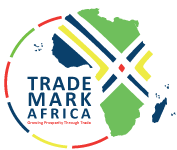Mombasa-Kampala-Kigali Highway It’s 1,200 km from the Kenyan port of Mombasa to the Ugandan capital, Kampala and another 525 to the capital of Rwanda, Kigali. But with a few strokes of the politicians’ pens and some clicks on a mouse, that distance just got dramatically shorter. “It used to take 18 days or more for one of our trucks to get here from Mombasa,” said Kassim Omar, Chairman of the Uganda Clearing Industry and Forwarding Association (UCIFA). “Now the same journey takes four days, sometimes even three.” The reduction is due to the decision at a Northern Corridor infrastructure summit by the Presidents of Kenya, Rwanda and Uganda to speed rapidly growing freight along their key trade route and the implementation of a variety of hi-tech systems that have slashed paperwork and time. The combination has stripped away a lot of the bureaucratic red tape that snarled the free flow of trade in the East African Community and contributed to some of the highest transport costs in the world, accounting for up to 40% of the price of goods to consumers. In October 2013, Presidents Yoweri Museveni of Uganda, Paul Kagame of Rwanda and Uhuru Kenyatta of Kenya agreed to implement a Single Customs Territory (SCT) between them as members of the East African Community. Tanzania and Burundi, say they followed suit at the Summit in November 2013. At a stroke, the agreement removed multiple weighbridge, police and customs checks along the Mombasa-Kampala-Kigali route and introduced computerised clearance and electronic...
Technology and Progress Unlocks Trade Corridor
Posted on: August 8, 2014
Posted on: August 8, 2014
























